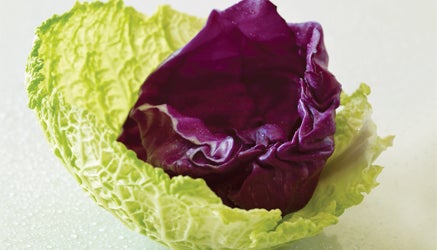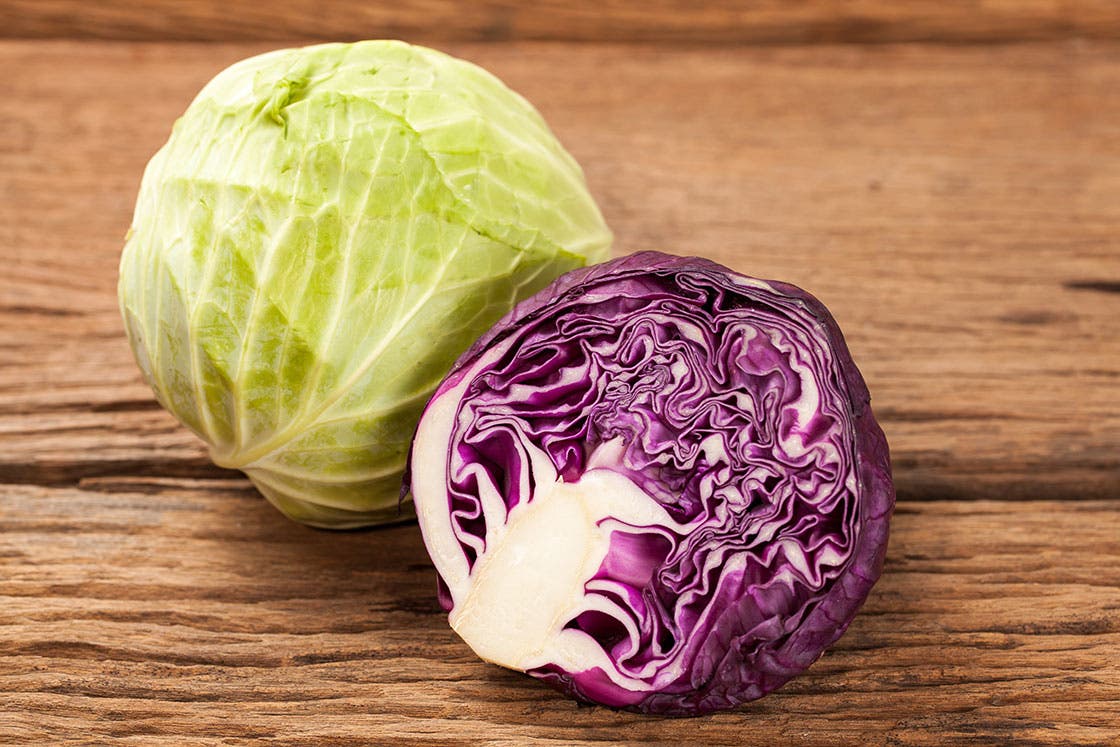Cabbage


Irish eyes may smile to see a plate of boiled cabbage (it’s their version of comfort food, after all), but for the rest of us, that particular preparation gives cabbage a bad rap. So we’ve taken the versatile, nourishing vegetable and given it a five-recipe makeover, using inspiration from cabbage-cooking traditions worldwide. From a French-style salad to a homey German noodle dish, with an Italian calzone, a spicy Asian stir-fry, and an oh-so-American casserole thrown in for good measure, the results are recipes that even avowed cabbage-haters will love.
Nutritional Profile
1 cup chopped raw cabbage contains:
– 22 calories
– 1 g protein
– 2 g fiber
– 68 mcg Vitamin K
– 33 mg Vitamin C
Heads up!
Don’t know your napa from your savoy? Here’s how to choose the right head for any recipe.
Savoy cabbage Loose, crinkly leaves that go from dark emerald on the outside to pale green toward the center of the head have a mild, sweet taste. Check the base for yellowing (a sign of age). Because its leaves are so pliable, savoy cabbage is the best choice for recipes that call for whole leaves, but it can also be substituted for green or red cabbage.
Green, red, or purple cabbage This tight-headed standard holds up well in marinades (think slaw) and slow cooking. Look for compact heads with no separating leavesa sign the cabbage is past its prime. For a crisp-tender texture and no cabbage-y smell in the kitchen, limit cooking time to 10 minutes. Adding 1 teaspoon of vinegar to the cooking liquid for red cabbage will keep the color bright.
Napa cabbage Its ruffled, pale, delicately flavored leaves are tender enough to stand in for lettuce but sturdy enough to stand up to the heat of a stir-fry. To preserve freshness, peel and slice only the leaves you need to use, then store the rest of the head in the fridge.